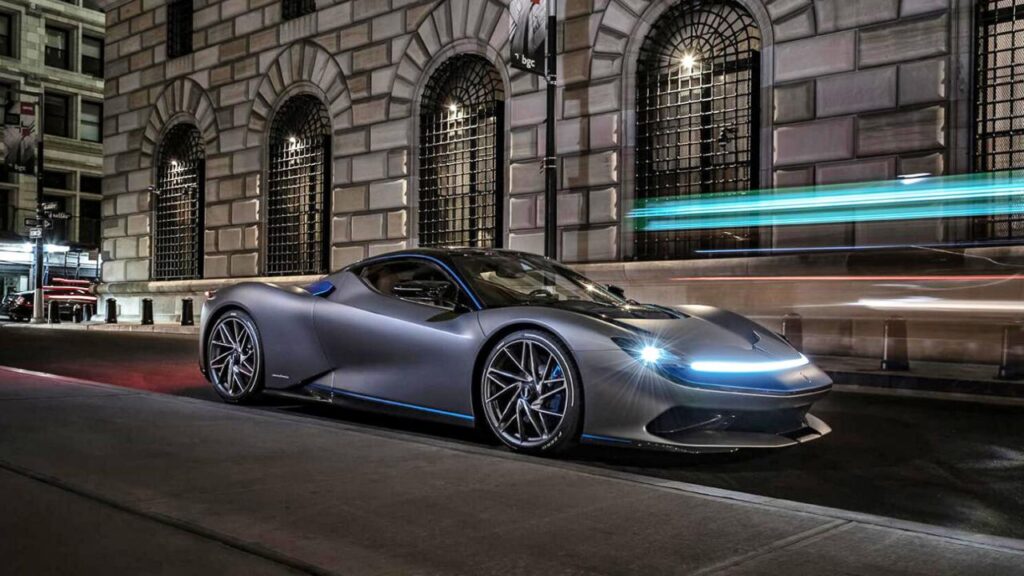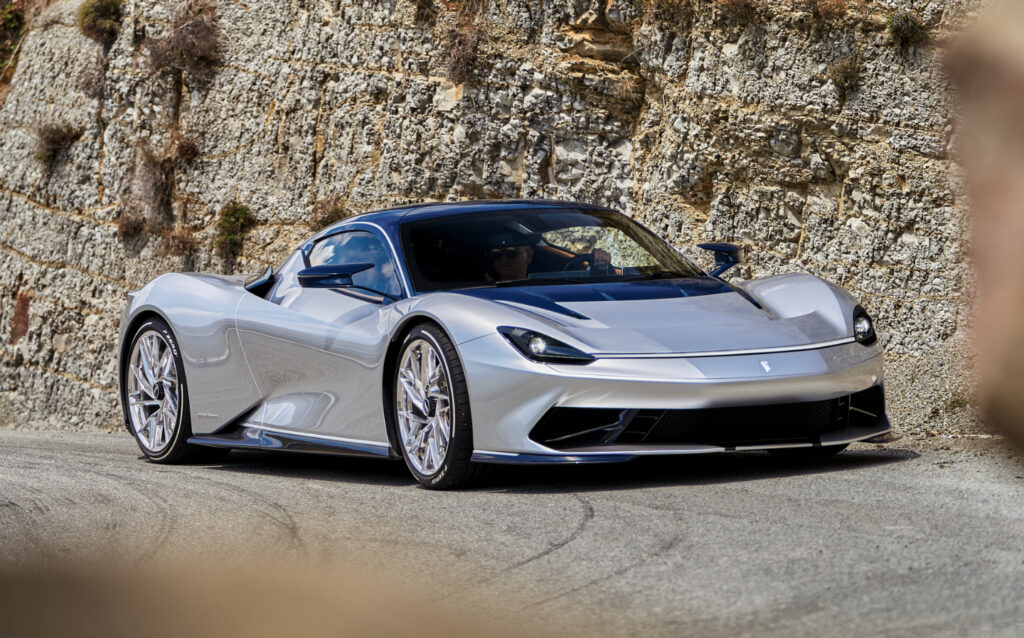Many automotive eras seem to have their holy trinity.
Of course, we had the last of the analogue trio; F40, F1 and 959, we had the pre-electrification triumvirate of Enzo, Mercedes McLaren SLR and Carrera GT, then we hit the hybrid P1, LaFerrari and 918. Now, we’re on the brink of the next evolution; the pure-electric Lotus Evija, Pininfarina Battista and Rimac Nevera – and it’s an evolution I haven’t been totally enamoured with.
As many of you will know I’m an engineer by training, and the thought of packaging heavy batteries into a performance car didn’t sit right with me at all. Nor did the whisper-quiet powertrain or the smooth, characterless acceleration. But I’ll always judge cars on their merit, and after a recent experience with the Pininfarina Battista, I’m starting to get it.

It’s unarguably beautiful, it’s exquisitely crafted and – with a clever Rimac-designed 1,914hp powertrain – it’s not only fast, but it’s surprisingly agile. Four independent motors, with four independent inverters and gearboxes, give you four-wheel-drive with software-controlled torque vectoring that can shift power to each wheel individually with more flexibility than ever before.
On Goodwood Motor Circuit’s hallowed tarmac Pininfarina’s test and development driver Georgios Syropoulos showed me exactly what the Battista can do, and it really is impressive – no doubt in part to do with his time spent at both Lotus and Tesla. There is no question that you can feel the weight of the batteries, especially in fast corners, but it is cleverly managed by the motors, which constantly shuffle torque to maximise rotation and create a car that feels as though it has the delicate chassis balance of something much lighter in tighter corners. This combined with the immediacy of the torque delivery delivered a sensation I’ve never experienced before.

I had arrived with a pre-conceived idea that I would score the car down for its lack of dramatic soundtrack – nothing can beat the roar of a normally aspirated V12 after all. The whine from the e-motors however, did not trouble me, in fact I found this new space age sound quite surprisingly alluring.
It’s actually the fact that it was a new experience for me that helped me to understand these cars, and their place within our industry. Where before I had feared their unavoidable obsolescence (as battery technology improves) was a barrier to their long-term desirability, it’s really no such thing. The Rimac, the Lotus and the Pininfarina are all capturing a moment in time and they’ll always be appealing as the first of their kind.

Look back to the original click-wheel iPod, with a measly 5GB physical hard drive. By any measure it is now obsolete, but boxed as-new examples are worth thousands because it sparked a revolution in personal music. Undoubtedly we’ll look back on these three cars 20 years from now (yes, the iPod really is 20 years old) and marvel at how far we’ve come, but I don’t imagine the desire to own a Nevera, an Evjia or a Battista will have waned.
Seen through the lens of the collector, for bringing hypercar performance into an era of combustion-engine bans, for delivering the most advanced powertrains and handling systems we’ve ever seen and for reinvigorating two famous brands and essentially creating a third, this particular electric holy trinity has – in my humble opinion – the potential to achieve collector car status with automotive and technology aficionados of the near-future.
Whether, of course, they will go on to establish a market for further EV hypercars in the long term is still unclear. There are many new companies popping up with the vision to build the next EV hypercar, off a carryover “skateboard” as it’s called in the industry. For the sector to develop, the product proposition needs to be far more compelling than simply piling in even more horsepower to an already fast powertrain. Even for those that have already embraced the EV hypercar, real world range will continue to be a problem for some time yet – especially in the context of hard track use.
Distilling my thoughts down, it is my reticence about the future of the EV hypercar, that makes me feel that these three new hypercars are worth a second look.